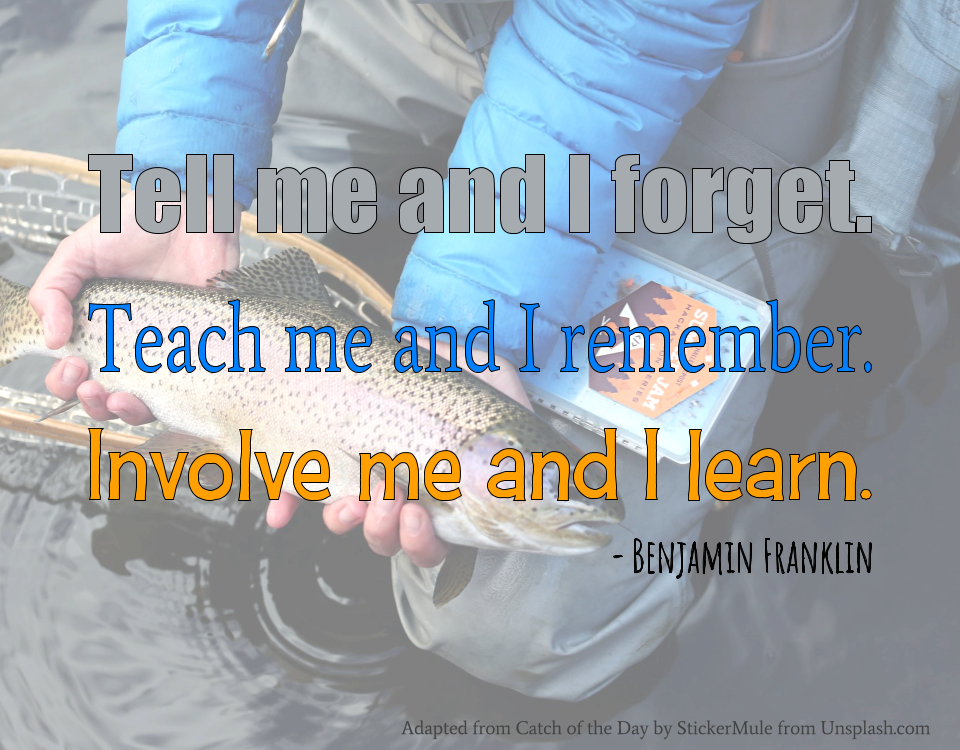Course Modification to Online
The past four weeks have gotten me to question and think about what is possible with online teaching, and content creation. Benjamin Franklin is attributed to saying,
Tell me and I forget. Teach me and I remember. Involve me and I learn.
I fully agree with this sentiment, and it makes me question my current practices of professional learning for my teachers. Many times the sessions I teach become sit and get. There is no involving to learn. Although this is my goal, I get so focused on the content I forget to allow the learners to be involved.
This past week I was able to attend the TCEA Convention and Exposition 2017. It was a great week of learning, networking, and stretching myself. You can see my notes here. The past couple of years, I was starting to feel that the effect of this conference was starting to dwindle. This year, maybe because of my involvement or courses I chose, I feel like I truly did get something out of it. I also led two sessions as well while, G Suite Power in a 1:1 iPad Environment and Beyond Google Forms. I feel as though the participants got something out of the sessions, but wonder if the content was in an online course would they have gotten more.
The iPad session could benefit from being online by giving the learner time to experiment with the apps taught. Also encouraging the learner to implement the apps in their own classroom or professional work, the learner could reflect on if the tool was something that they could use. Just as my current iTunes U course, using reflection gives the brain time to process and categorize the learning.
The Google Forms presentation was a 90 minute session, that was supposed to be hands-on. By the end of the session I feel as though I had lost half of the crowd as I walked through the steps of setting up and using Add-Ons like FormMule, Autocrat, and Flubaroo. An advantage of transferring this content to an online course is that the learner could pause and move at their own pace. Also, a learner could go back and try steps multiple times. If this was to go online I would be sure to create short, explicit videos to detail every step. Also, I would create text-based instructions for those that prefer to learn by reading and then doing. An online course affords for varying degrees of differentiation and learning style.
Some disadvantages of moving these two courses online, would be finding ways to check for mastery and providing the immediate support that a live face to face session contains. These problems could be remedied by providing support through online chat and mastery could be checked by the creation of an ePortfolio showing the completed work by the learner. Although not the best solution, I do not believe it outweighs the benefit of instant access to content, that is reviewable and easily able to be differentiated.
I feel that soon, many of the course I teach will be available online. This does not mean that face to face classes do not have their part in education. Just as Bates says “for a lecture to be effective, it must include activities that compel the student to mentally manipulate the information” (2015). Breaking the face to face into natural chunks and stopping for processing and reflection, will be an immediate benefit to the learner. Online learning just lends itself better to that. Online learning has naturally built breaks and learning activities.
References
Bates, A. W. (2015). Teaching in a digital age. Retrieved from https://opentextbc.ca/teachinginadigitalage/.
